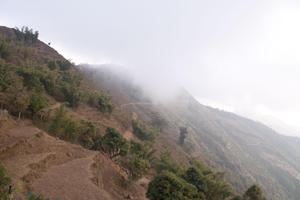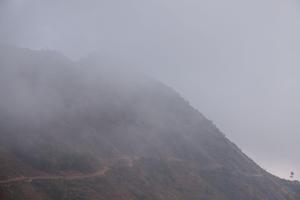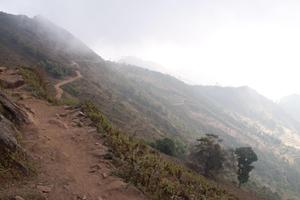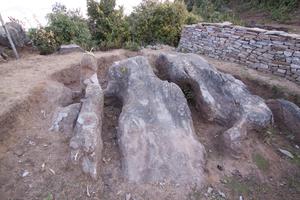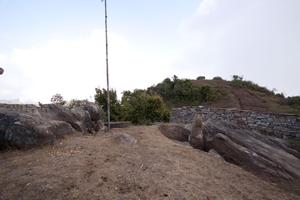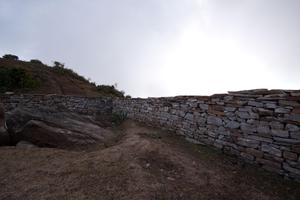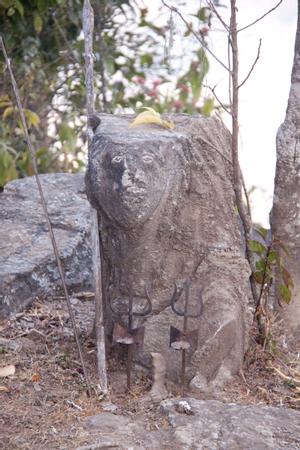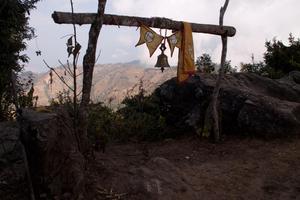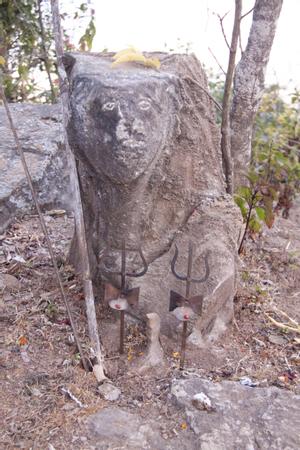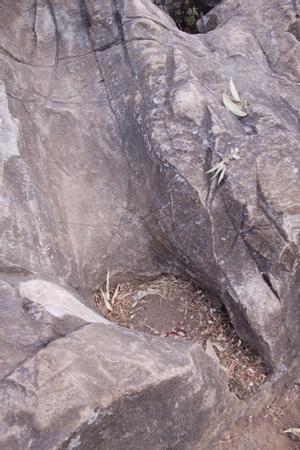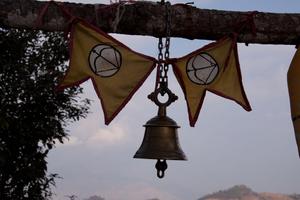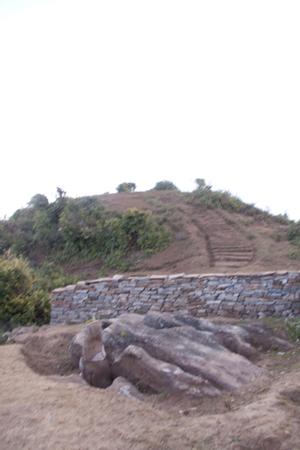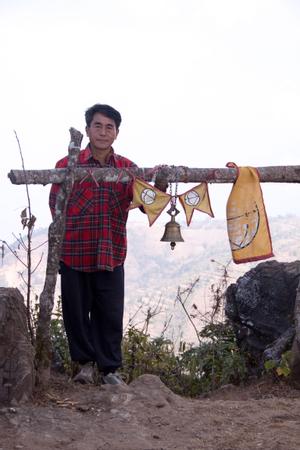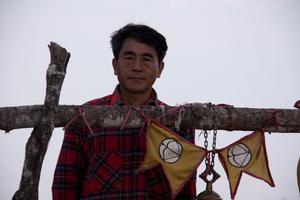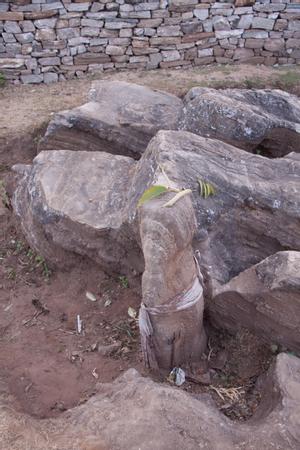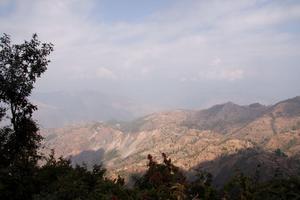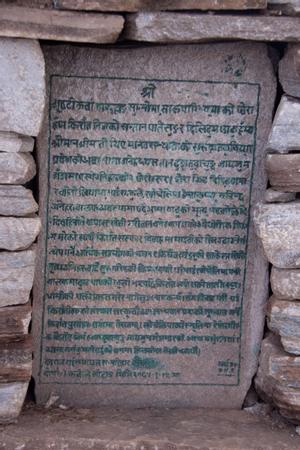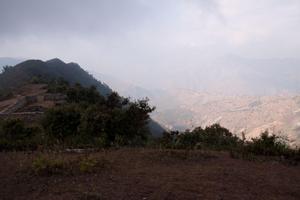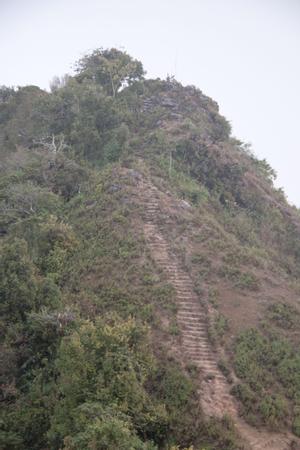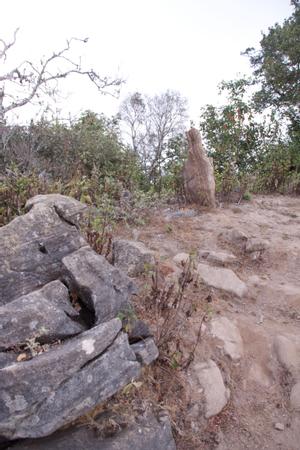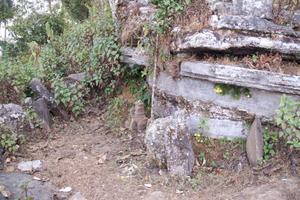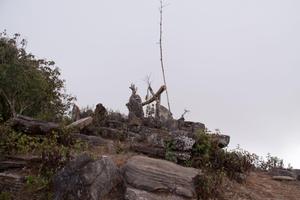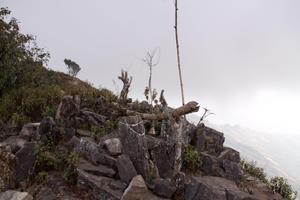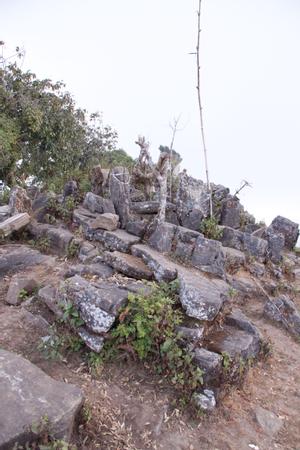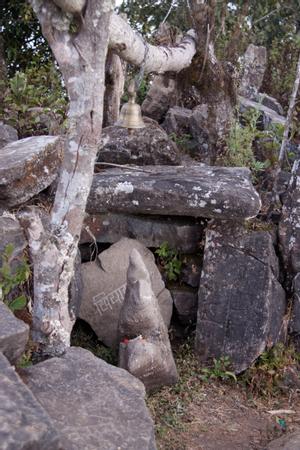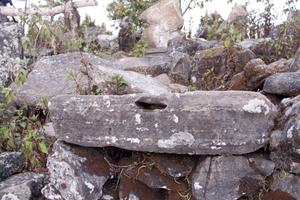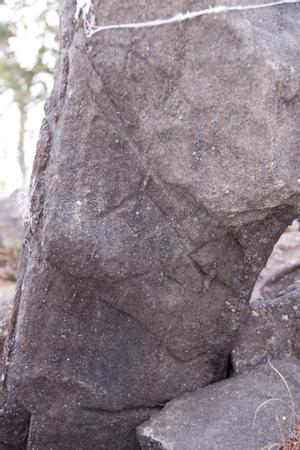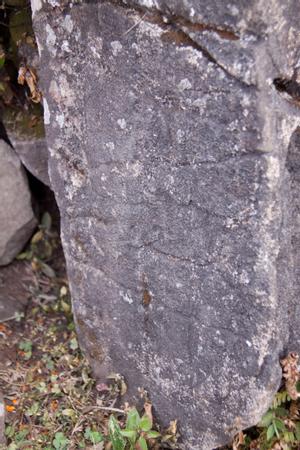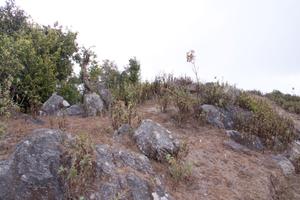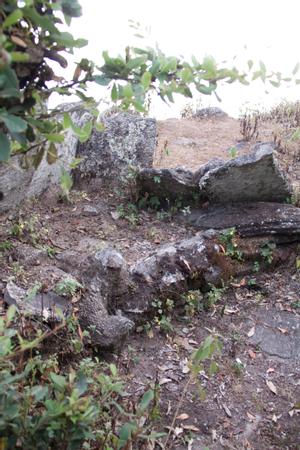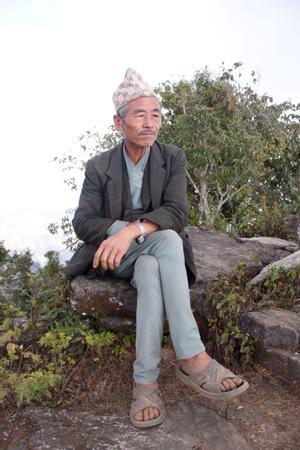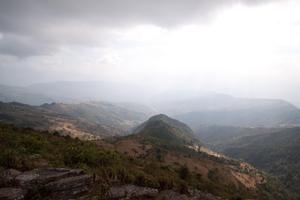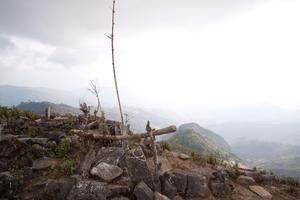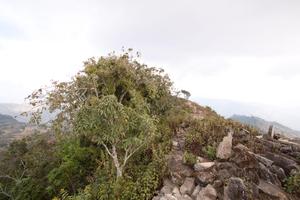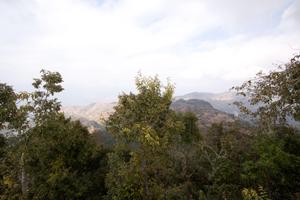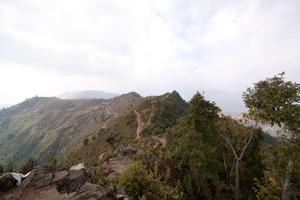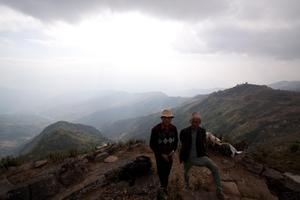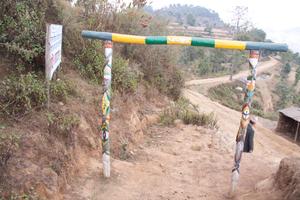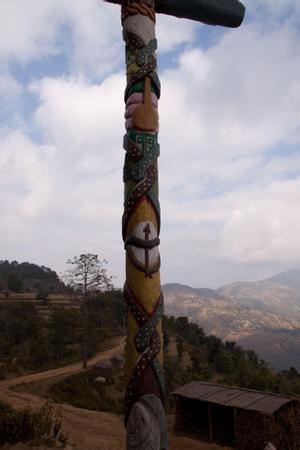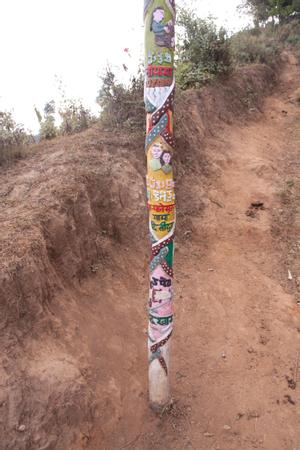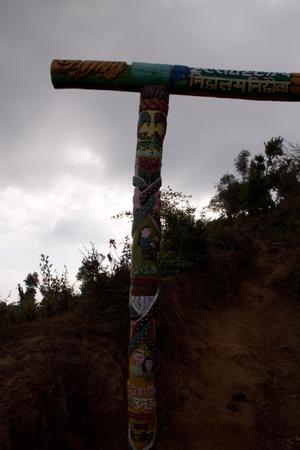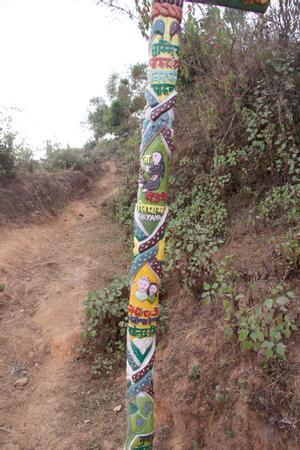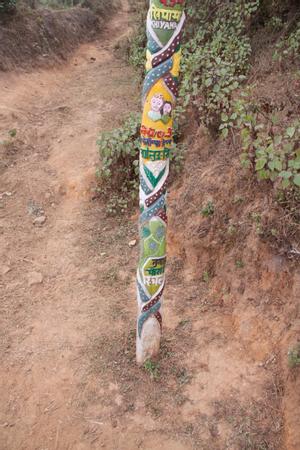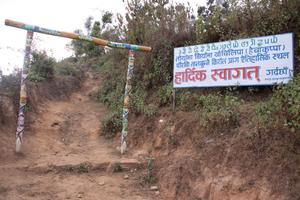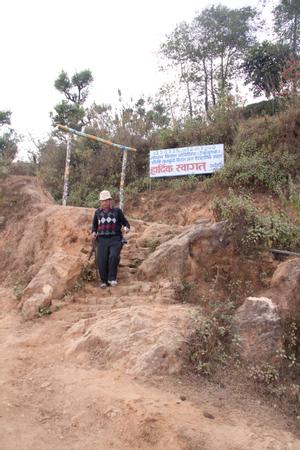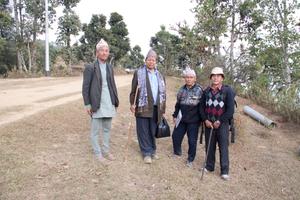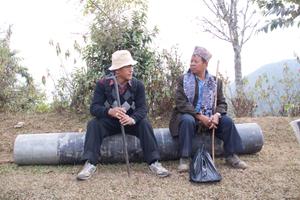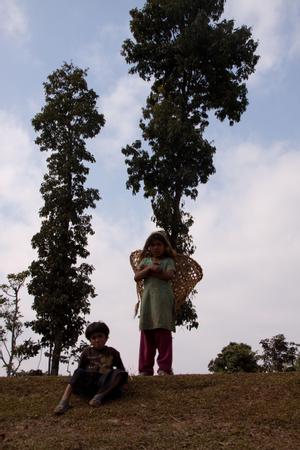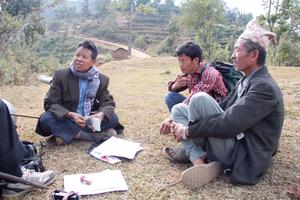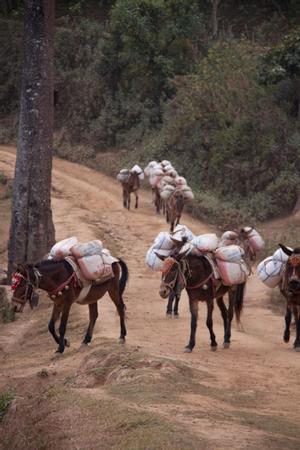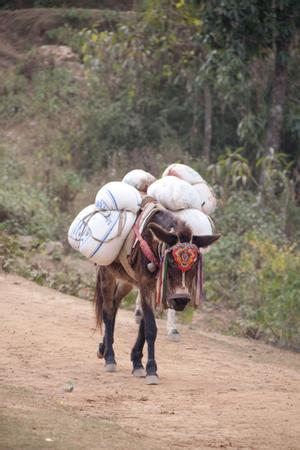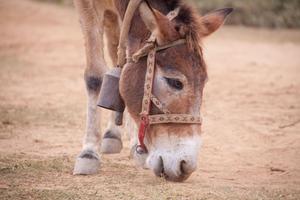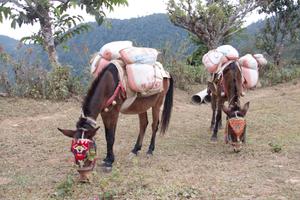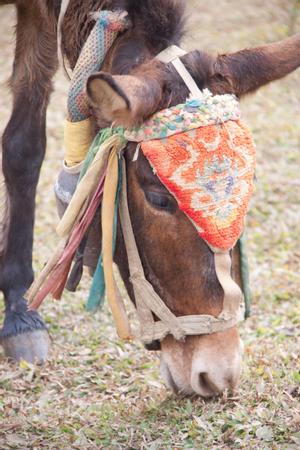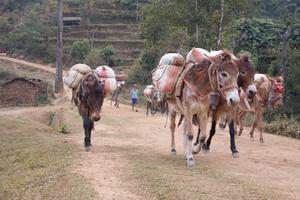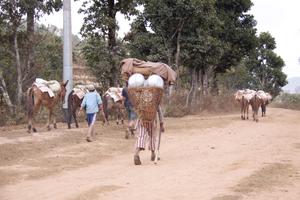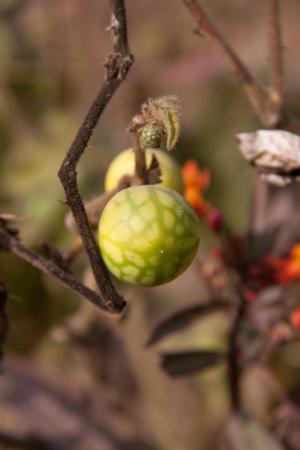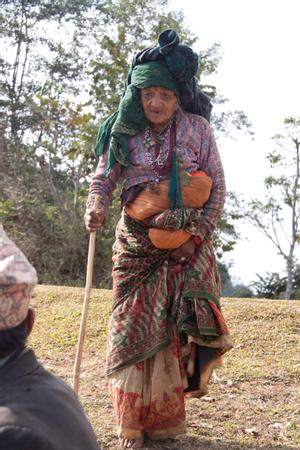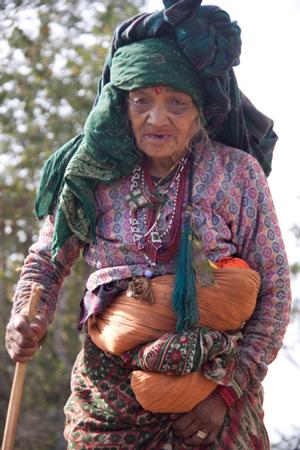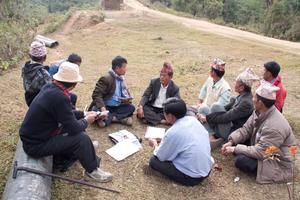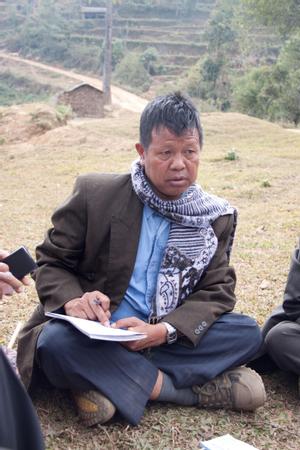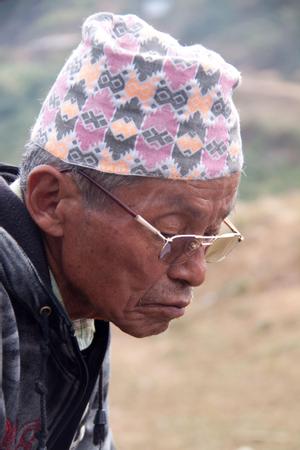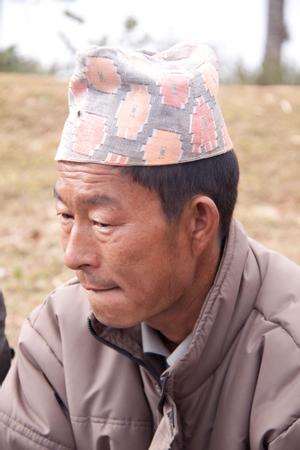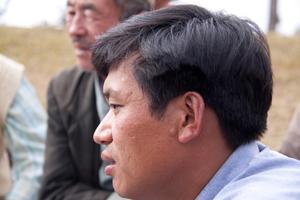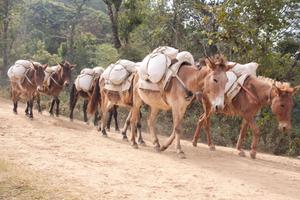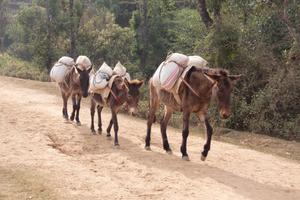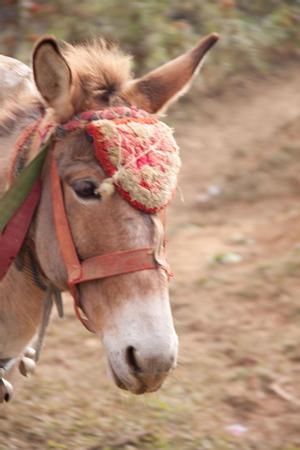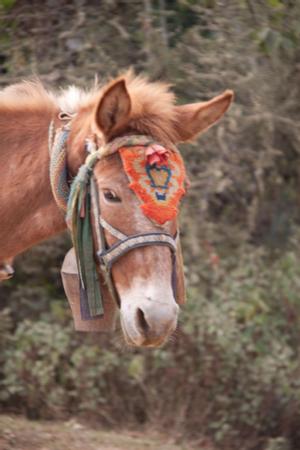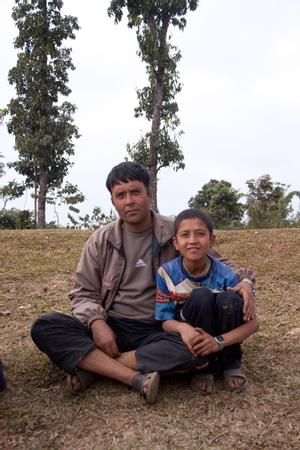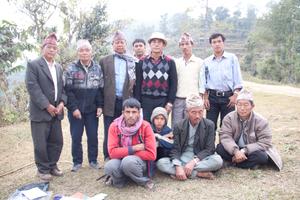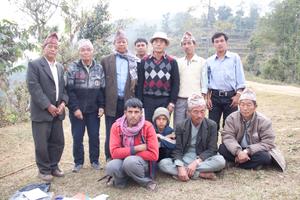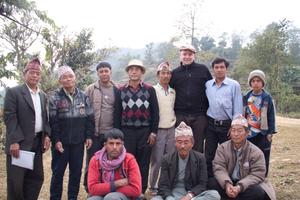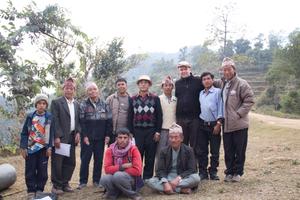Tuwachung-Jayajum Pilgrimage Site
The hill ridge of Tuwachung-Jayajum is located close to the famous pilgrimage site of Halesi-Maratika in Khotang District of Eastern Nepal. On the site and in its surroundings, a number of sacred places and stones are located, that - according to the local conception - are related to wellknown mythological stories common among most Kirat groups. It is here where the popular mythical hero Kakcilipu is supposed to have lived together with his sisters Toma and Khema. In the village of Chichinga, north of the ridge, Kakcilipu is said to have grown up, while on the ridge itself he is said to have lived with his sisters. It is here where some of the most basic cultural techniques are said to have come into existence. The myth told in relation to the sacred sites on Tuwachung-Jayajum is told in various local variations. The main narrative, leaving out many culturally relevant details and side plots, can be summarized as follows:
"Once there were three orphan siblings, the oldest sister Toma, the younger sister Khema, and their baby brother Kakcilipu. One day Kakcilipu spills the last food they have. The sisters—in rage—beat their brother to death and bury him. Before leaving the place of grieve they plant a flower each representing their lives and. Then they separate in opposite directions. The older sister Toma warns the younger one never to annoy their uncle, the owl. The younger sister Khema soon forgets the warning and is eaten up by uncle owl. The older sister—upon inspecting the flowers—finds the younger sister’s flower withered. She questions uncle owl who admits having killed Khema. Toma makes him spit out the bones and she revives her younger sister by chanting songs. The sisters settle together on a small hill where they invent the craft of weaving. The baby boy Kakcilipu wakes up in his grave and survives by hunting and collecting wild fruits. By chance he finds out how to grow grain and catch fish with a trap. One day he finds a round stone in his fish trap, which he throws back into the river. After the stone appears over and over again in the trap, he decides to take it home. While he’s outside of his house the stone transforms into a beautiful woman that cooks delicious food for him. After discovering this, he proposes to marry her. She is the daughter of the serpent queen. However, without his sisters the marriage rituals cannot start, and he sends messengers to invite them. The sisters—believing that the brother is dead—first are reluctant to follow the invitation, but finally can be convinced, and the marriage can take its course."
In 2008, Alban von Stockhausen and Chatur Bhakta Rai, who—at the time—was also president of the largest Kirat social and cultural organisation Kirat Rai Yayokkha visited the area was supposed to be developed into a major cultural site of Eastern Nepal. On this tour, many places related to the mythological narratives were visited. Most of them could only be identified with the help of local Chamling Rai elders. In Chichinga village, below the northern slope of the Hill, they could pointed out watersources, trees and other places associated with the mythology. On the hill ridge of Tuwachung-Jayajum, some features of the sacred landscape had already been turned more visible, while others were only accessible after removing the vegetal overgrowth. A newly set-up committee— that was to formally establish a new society aimed at the preservation of the site during the visit - had obviously already started their work on the site. The main path leading onto the ridge had been equipped with a signpost and decorated by a gate featuring elaborate woodcarvings. Some of the rocks and worship places on the hill had been enclosed by stone walls and appropriated by the Kirat through a flag of Kirat Rai Yayokkha.

